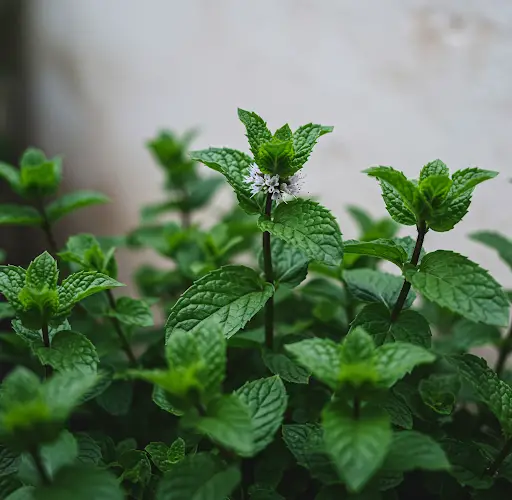Brilliant Idea: You Will Not Regret Knowing This Method of Growing Mint for Your Family
Mint is one of the easiest and most rewarding herbs to grow at home. Whether you have a large garden or just a small balcony, mint can thrive in a variety of conditions and provide you with fresh, fragrant leaves all year round. Growing your own mint ensures you have an unlimited supply for cooking, tea, and even natural remedies. This guide will show you the best methods to grow mint successfully, making it an effortless and productive addition to your home garden.
Why Grow Mint at Home?
- Easy to Grow – Mint is hardy, grows quickly, and requires minimal maintenance.
- Continuous Supply – With proper care, mint produces leaves all year round.
- Health Benefits – Fresh mint is packed with antioxidants, vitamins, and essential oils.
- Saves Money – No need to buy expensive store-bought herbs.
- Repels Pests – Mint naturally deters mosquitoes, ants, and other insects.
- Aromatic & Refreshing – Adds a lovely fragrance to your home and garden.
Best Methods to Grow Mint at Home
1. Growing Mint from Cuttings (Fast & Easy Method)
- Select a healthy mint stem (about 5-6 inches long) from an existing plant.
- Remove the bottom leaves, leaving only the top few.
- Place the cutting in a glass of clean water, ensuring the lower nodes are submerged.
- Keep the glass in a bright, indirect light area.
- After 7-10 days, roots will develop. Transfer the cutting into a pot or garden soil.
2. Growing Mint from Seeds (For New Plants)
- Choose high-quality mint seeds from a trusted supplier.
- Fill a container or garden bed with well-draining soil.
- Sprinkle seeds evenly on the surface and lightly cover them with soil.
- Water gently and keep the soil moist but not waterlogged.
- Seeds will germinate in 10-15 days, and plants will be ready for harvest in a few weeks.
3. Growing Mint in Containers (Perfect for Small Spaces)
- Use a pot with drainage holes to prevent root rot.
- Fill with a mixture of potting soil, compost, and sand.
- Place the container in a sunny or partially shaded location.
- Water consistently but avoid overwatering.
- Prune regularly to promote bushy growth and prevent legginess.
4. Growing Mint in Water (Hydroponic Method)
- Place fresh mint cuttings in a glass of water.
- Change the water every 3-4 days to prevent bacteria buildup.
- Once roots are established, either keep it growing in water or transplant into soil.
5. Growing Mint in Garden Beds (For Larger Harvests)
- Choose a moist, well-draining area with partial sunlight.
- Mint spreads aggressively, so plant it in a separate area or use garden edging to contain it.
- Space plants 12-18 inches apart for proper airflow.
- Keep the soil moist but not soggy, and fertilize lightly every few weeks.
Caring for Your Mint Plant
1. Watering
- Mint likes consistently moist soil but does not tolerate waterlogged conditions.
- Water 2-3 times a week, more often in hot weather.
2. Pruning & Harvesting
- Trim stems regularly to encourage fuller growth.
- Harvest leaves by snipping the top portions of the plant.
- Avoid cutting more than one-third of the plant at a time to allow it to recover.
3. Fertilizing
- Use organic compost or diluted liquid fertilizer once a month.
- Avoid heavy fertilization, as it can dilute the plant’s essential oils.
4. Pest & Disease Control
- Aphids and spider mites can occasionally attack mint; use neem oil or a soap solution.
- Powdery mildew can occur in overly damp conditions; ensure good airflow and avoid overhead watering.
Creative Ways to Use Fresh Mint
- Mint Tea: Fresh leaves steeped in hot water for a refreshing herbal tea.
- Cooking: Adds flavor to salads, sauces, and desserts.
- Detox Water: Infuse mint with lemon and cucumber for a healthy drink.
- Natural Air Freshener: Keep potted mint indoors for a fresh-smelling home.
- Pest Repellent: Place crushed leaves around windows and doorways to deter insects.
Common Problems & Solutions
1. Mint is Spreading Too Fast
- Grow mint in pots or raised beds to prevent it from overtaking your garden.
- Use garden barriers or edging to limit root expansion.
2. Yellowing Leaves
- Could be due to overwatering or poor drainage.
- Improve soil aeration and water less frequently.
3. Weak, Leggy Growth
- Happens when mint isn’t pruned regularly.
- Trim back stems often to encourage bushier growth.
4. Slow Growth or Wilting
- May indicate a lack of sunlight or nutrients.
- Move the plant to a brighter location and apply compost.
Conclusion
Growing mint at home is simple, cost-effective, and highly beneficial. With the right care and methods, you can enjoy a continuous supply of fresh mint for your culinary and medicinal needs. Whether grown in containers, garden beds, or water, this resilient herb is perfect for beginners and experienced gardeners alike. Start growing your own mint today and experience the benefits of fresh, homegrown herbs!



